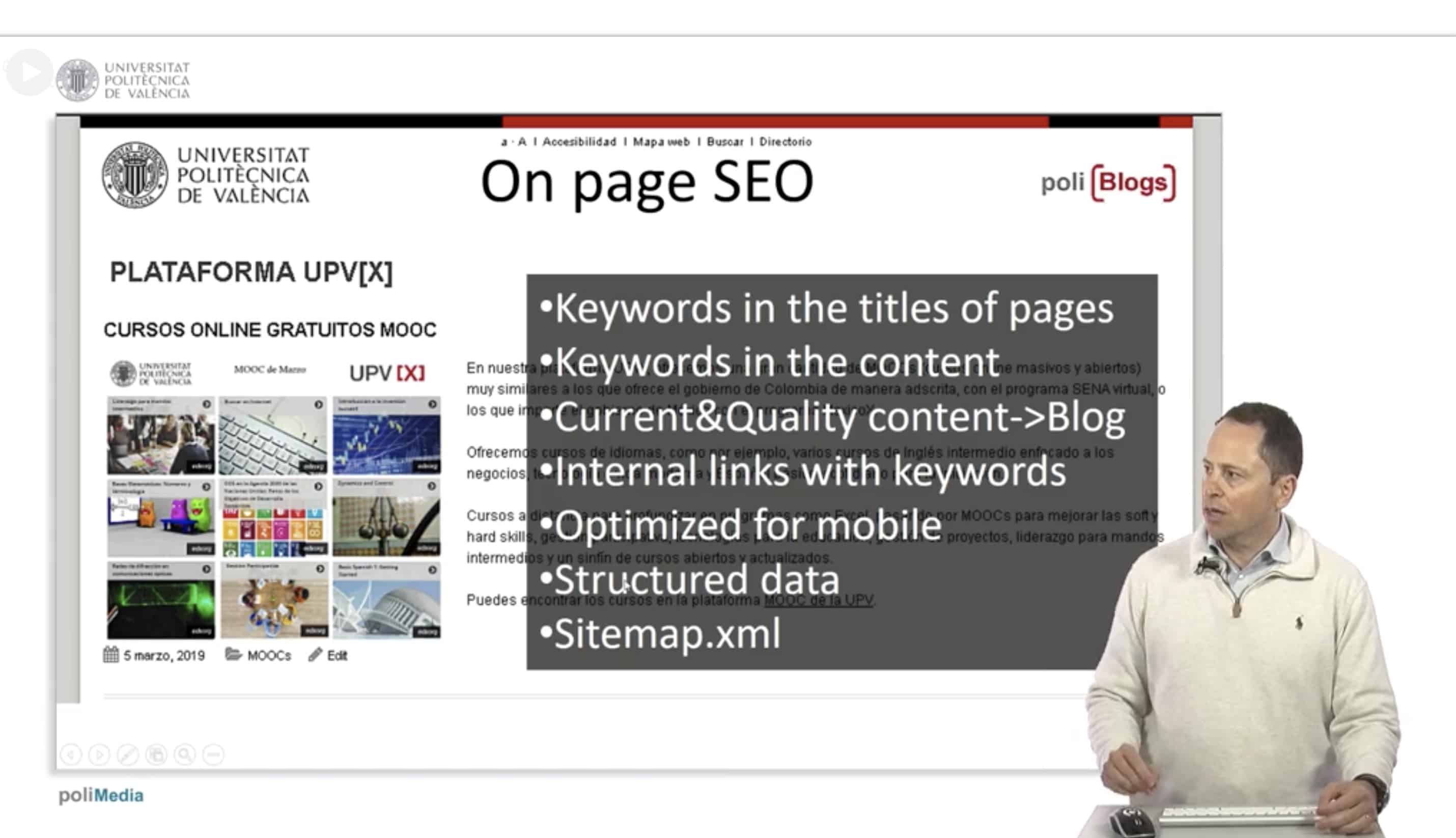5 Ways to Market a MOOC
Five course promotion techniques that can bring more users to your MOOC. Talk delivered by Ignacio Despujol of the Universitat Politecnica de Valencia.
In the early days of MOOCs, the medium was the marketing. Just by virtue of releasing a course on one of the hot new platforms (Coursera, edX, Udacity), you could practically guarantee that learners would enroll by the tens of thousands.
Those days are gone. New MOOCs no longer generate the kind of buzz they did back in 2013. You can’t simply make a great course and leave the rest to chance. These days, savvy digital marketing is a key ingredient to making a successful MOOC.
At the recent Open edX Conference, Ignacio Despujol, of the Universitat Politecnica de Valencia (UPV) delivered a talk on the course promotion techniques UPV uses to bring new learners to their MOOCs. With 71 courses (including one in Class Central’s Top 50 MOOCs of All Time) and more than 1.5 million enrollments, UPV is one of Europe’s top MOOC producers.
As Ignacio made clear in his talk, UPV’s digital strategy goes well beyond making MOOCs. UPV uses multiple digital marketing channels including search engine optimization (SEO), social media marketing, web and PR, and email. Strong course promotion is also a way to overcome some of the challenges MOOCs face, the topic of a previous talk Ignacio gave at last year’s Learning with MOOCs Conference.
For those who did not attend the Open edX Conference, Ignacio has converted his talk on MOOC marketing into a series of videos. Below are some of the techniques he recommends MOOC makers use to promote their courses.
SEO For MOOC Marketing
Search engine optimization (SEO) is the practice of increasing traffic to a website using the properties of organic searches conducted through search engines. Using SEO to market a MOOC requires having a website for your courses, which could be a section of a university site or a freestanding website. Start by installing and setting up Google Analytics and Google Search Console. You can use these tools to determine which keywords to target.
SEO starts with having high quality, useful, updated content, that includes the keywords you are targeting. Google uses links from other websites as one measure of content’s usefulness, so try to get links from other websites (but not links you pay for!). Other good practices include making sure keywords appear in titles and headings, having a site map, continually adding updating content through a blog, including internal links throughout the site, and making sure your website can be easily used on mobile.
Social Media MOOC Marketing
UPV also uses social media to promote its MOOCs. MOOC makers can either create social media profiles for individual courses, or can use the social media profiles of their universities to promote courses. Facebook, Twitter, YouTube, and Instagram can all be effective MOOC marketing channels. Ignacio recommends tailoring content to each social network you are using.
Ignacio emphasizes that YouTube can be a highly effective channel for MOOC marketing. UPV’s YouTube channel has over 150,000 subscribers and almost 40 million views. Good practices include tagging videos, writing a good description of what is in each video, and including links in that description.
Blogging and Press Releases
Multiple digital marketing techniques depend upon having a website with an active blog. In your blog you can share news about your course, stats about student enrollment and other data, guest posts, and announcements about new courses and other offerings. When your university or institution links to your website, those links also help to improve search engine ranking, since Google considers .edu pages to be reputable and authoritative. In addition to blogging, Ignacio recommends working with the PR department at your university to determine what is newsworthy about your course and periodically generate press releases. UPV has tracked the impacts of its blogging and PR activities and estimates that these efforts have generated media impact that would have cost more than 750,000 euros in advertising.
MOOC Email Marketing
Email remains one of the most important digital marketing channels. The key, says Ignacio, is to offer important information to a targeted audience. If you are working within a university system that produces multiple courses, or if you have more than one course, emailing students in one course can be a good way of letting them know about other courses that might interest them. Some instructors create periodic newsletters, though this can be time consuming. One strategy that UPV has used effectively is to target influencers through email, sending lists of courses and other information that they can publish on their blogs and websites. Universities often maintain email listings of alumni networks, another avenue for email outreach.
Class Central Reviews
Finally, Class Central can be a useful marketing tool, especially if you encourage students to submit reviews. The two most common methods of boosting the number of reviews in your course are to:
- Email your students and ask them to submit a review. You can do this in one of your weekly updates to learners towards the end of the course.
- Make reviewing the course on Class Central as an optional last step towards completion of the course.
Including a link to the Class Central course information page makes it more convenient for students to leave reviews. More information can be found in our Help Center article for course instructors.
Tags








Ronny De Winter
Creating good content and promoting class central as THE independent mooc review platform is for me the best mooc marketing. As a lifelong learner I rely for 80% of my mooc planning on Class Central reviews